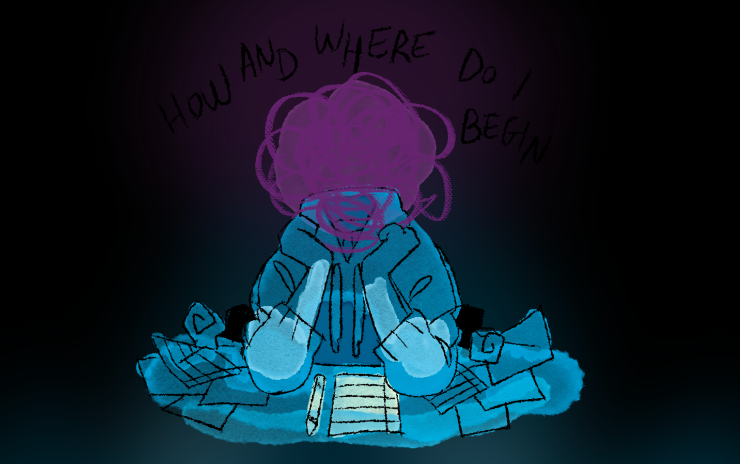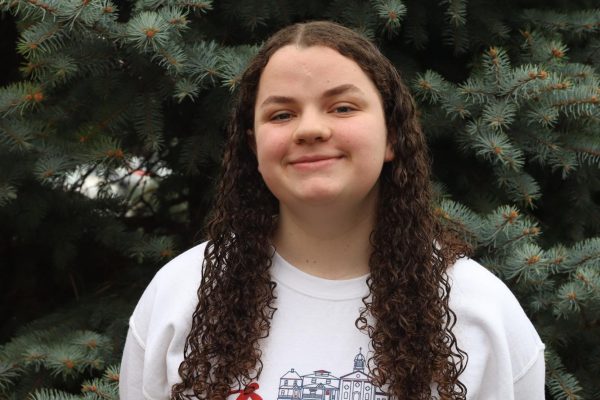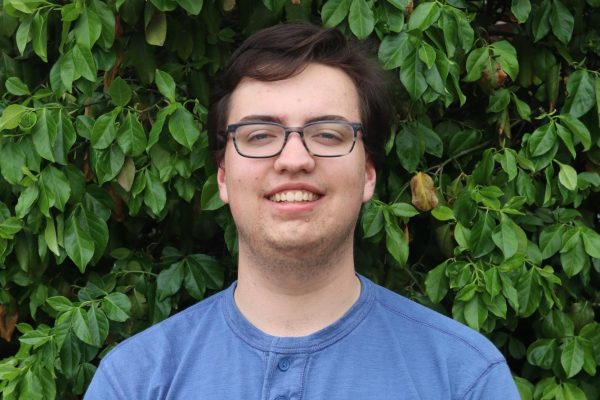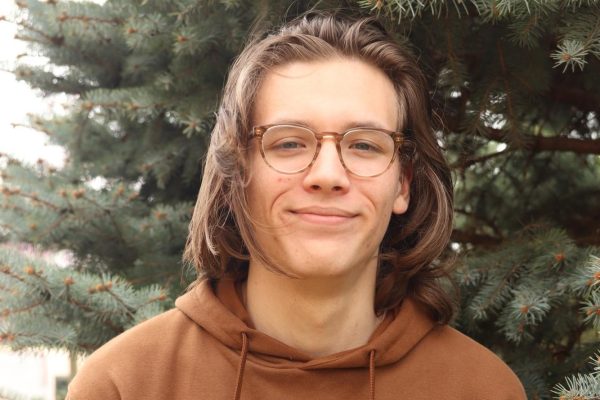Call Ed: Mind over matter
Someone needs to change the narrative, and it starts with KSD. We are not asking, but begging KSD to listen.
Julia Roberts, FACS teacher, walks into her first hour exhausted. She’s been up all night grading papers and is still falling behind. Then, she sees a classroom full of students who look equally drained. Although the school year must go on, many students and teachers have expressed they can’t keep pushing through much longer. As this burnout persists, students and staff are begging KSD to recognize their mental health struggles. TKC voted unanimously (68/68) that KSD needs to do more to support student and staff mental wellbeing.
This year, KSD teachers get an additional two days off, along with the other sick days they have. One is for their personal wellbeing and the other is a day where teachers are encouraged to get their COVID-19 booster shot. If a teacher wishes to use their wellness day, they must request it two weeks in advance and the district has the power to deny their request. Many teachers, including Roberts, said it is hard to predict how they will feel in two weeks and worry that their class will not be able to learn properly without them.
When teachers take a wellness day, the school will also have to find a substitute teacher. With a nationwide labor shortage, finding a substitute teacher seems nearly impossible. Jacqueline Ravenscraft, executive secretary, said the sub shortage has added stress and time to her job. Ravenscraft wants teachers to be able to take days off, but the scramble to find a substitute has caused walking counselors and other KSD teachers to cover classrooms during their scheduled plan time. Many KHS teachers said taking off days does not help their mental state. They said if they were at home trying to unwind, they’d probably be grading papers and worrying about the substitute teaching their class incorrectly. While teachers appreciate the effort, KSD needs to recognize the unnoticed burden that comes with teachers taking a wellness day.
Students deal with this issue as well. They are not given mental health days, but rather four “no homework/catch up weekends,” to focus on their wellbeing. High schoolers are supposed to be enjoying these relaxing weekends, when instead they are trying to work ahead for the vigorous week coming up. Because teachers aren’t allowed to assign homework on these weekends, the weeks leading up to “no homework weekends” tend to be more stressful and work-heavy for high schoolers. Along with students trying to get ahead, they are also trying to catch up on work from previous weeks. As assignments continue to pile up for students, “no homework weekends,” end up being just as overwhelming. Every student loves the idea of a “no homework weekend,” and it’s a step in the right direction, but in order to truly help students feel less overwhelmed, KSD needs to cut down on the volume of homework they allow teachers to give. Teachers argue that repeating content learned in class helps students comprehend the material. However, how beneficial is it to do 20 math problems as opposed to 10?
A hot topic of conversation any student can relate to is the hours of workload they receive. Hearing students complain about how they were up till 1 a.m. studying for critical tests in all their classes is an everyday occurrence. One junior said she spends four to six hours each night doing homework because of her extracurriculars, causing her to go to bed at 12 a.m. By the time the weekend comes, she finds it too exhausting to hangout with friends because of the long and taxing week she just experienced. Being a part of the dance team and taking all honors and AP classes means her time to unwind is limited. So why do students choose to take AP and honor classes? The pressure surrounding students to immerse themselves in hard classes is astronomical. Whether this pressure comes from teachers, parents or peers, as students, it’s the norm at KHS to take on more than you can handle. The worry that you won’t get into a “good college,” unless you take five AP classes is prevalent among students. The competitive culture at KHS regarding grades cannot be ignored. Although students don’t want to juggle five AP classes, KHS culture makes them feel like they have to. If all teachers expect students to get everything done on time and with their full effort, the amount of homework given needs to change.
Abbey Paul, junior and Mental Health Committee board member, said that little of the homework she receives is honest learning. Busy work is a better term for the countless hours students spend doing pointless assignments. On top of that, most of the work students complete either goes ungraded or graded with minimal effort for completion. As teachers continue to assign work, their stack of ungraded papers pile up, leaving not only students stressed out, but teachers as well.
This build-up in stress and mental health issues need to be part of the conversation. Just recently, KHS lost one of its own. During that week, sophomore students said the amount of homework and quizzes they had did not change despite the loss of one of their classmates. Several of their teachers didn’t acknowledge that students lost one of their peers and went on with school as if nothing happened. School refuses to stop for anything, and this situation alone illustrates why mental health needs to be taken more seriously.
“Kirkwood is all about being a community until something bad happens,” a KHS sophomore said. “Then it’s every man for themself.”
As we return to normal after the COVID-19 pandemic, going back to school full-time is more difficult than many teachers and students anticipated. Many high school students haven’t experienced a normal school day in two years and having to figure out how everything works again is draining.
The added uncertainty of the pandemic led the American Academy of Pediatrics, the American Academy of Child and Adolescent Psychiatry and the Children’s Hospital Association to declare that the COVID-19 pandemic has worsened an already existing mental health crisis among children and teens. The CDC reports that ER visits for mental health crises were up 24% among children ages five to eleven and up 31% for 12 to 17-year-olds. This has caused several pediatric centers to declare a State of Emergency in mental health.
In response to this anxiety, the Ladue School District, along with a dozen other St. Louis public schools decided to extend their Thanksgiving break two extra days. These days off were taken district wide, which prevented the stress of having to find a substitute for teachers. A Ladue teacher described the two days off as “monumental.”
KSD decided not to take district-wide wellness days due to the abundance of school students have missed because of the COVID-19 pandemic according to an email from Dr. Ulrich, KSD superintendent. In the same email, Ulrich said since March of 2020, KSD students have missed over 800 hours of direct, in-person instruction. This included virtual learning as well as enforced classroom quarantines. He added KSD has single parent households and employees that have hourly wages, and by taking days off he believes these people would be affected disportionately.
However, according to Chris Kilde, Ritenour superintendent, said the stress within the school environment is worse than it has ever been in 22 years. If other districts are able to provide their workers and students with mental health days to focus on themselves, KSD should be able to as well. These two days off need to serve as a wake up call to KSD who is failing to recognize the suffering wellbeing of their students and staff. And if this doesn’t serve as a wake-up call, let the students who are struggling to get out of bed in the morning be one. The students who feel isolated and alone.
Students want to be able to talk to someone and be understood. TKC suggests that KSD offers a wellness center for students to use. Yes, every school has counselors, but at a high school, one counselor can occupy up to 400 students. And many times, being vulnerable in front of an adult they don’t know is hard. Having a center where students can talk and unwind would alleviate pent up stress students are experiencing. A safe place, without judgement, where students and teachers can hear each other.
Other ideas TKC suggests are:
- Training for teachers on how to better help students for when they’re struggling mentally
- Make students and teachers more aware of the resources schools provide by never shying away from uncomfortable situations and promoting that getting help is OK
- Having teachers only assign work that is helpful and necessary. Admin could do this by comparing the amount of homework KHS gets to other districts. In addition, teachers could enter major tests they will assign that week on a spreadsheet so everyone is conscious of the workload students will have.
We need time. Time to catch up on our endless overdue assignments, time to see our family and time to sleep. Teachers want days to work on grading papers, and students want time to work on their mounting pile of assignments that were due weeks ago. Mental health is plummeting more than ever, and the lack of recognition from KSD is inexcusable. Conversations need to continue, and progress needs to be made. Someone needs to change the narrative, and it starts with KSD. We are not asking, but begging KSD to listen.
Your donation will support the student journalists of Kirkwood High School. Your contribution will allow us to purchase equipment and cover our annual website hosting costs.
This is the opinion of the entire Kirkwood Call staff.
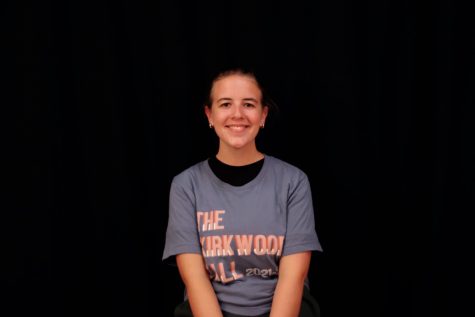
she/her
Hobbies and Interests: art, philosophy, reading, D&D, public speaking, video games
Favorite Song: The Bug Collector by Haley Heynderick
Favorite...


